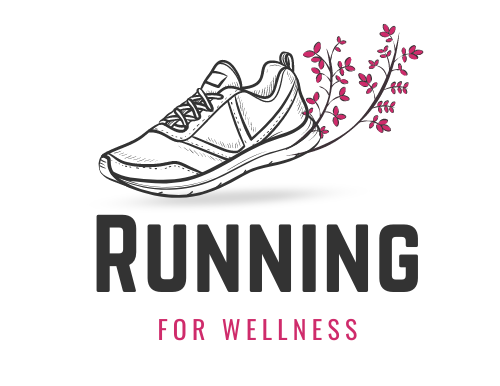A negative split in running means completing the second half of a race faster than the first. It’s a pacing strategy that requires patience, discipline, and smart execution.
Runners often underestimate its value, believing that going hard early is the key to faster times.
However, data and top performances show otherwise. Negative splits contribute to better results, improved mental focus, and greater satisfaction at the finish line.
Without further ado, let us begin.
The Science and Psychology Behind Negative Splits
Pacing a race isn’t just about clock-watching. It’s a reflection of how the body functions under pressure and how the mind copes with fatigue and self-doubt.
A negative split approach makes physiological and psychological sense. Instead of peaking early and crashing, it encourages controlled effort followed by a strong surge when it matters most.
Starting a race conservatively helps the body transition from rest to exertion. Muscle temperature rises, blood flow improves, and the cardiovascular system hits its stride.
Jumping into race pace too soon taxes the heart, burns glycogen rapidly, and sends fatigue signals prematurely.
- Early energy conservation maintains glycogen stores
- Gradual warm-up improves muscle function and efficiency
- Lower initial heart rate avoids spiking too early
- Controlled breathing in the first half improves oxygen uptake
On the mental side, finishing strong delivers a powerful psychological payoff. When runners pass others late in the race, confidence surges.
A weak start feels forgettable once a dominant final stretch reshapes the memory.
- Final surge boosts confidence and sense of mastery
- Positive emotions from passing others in the final kilometers
- Even when pacing falters, a strong ending provides closure and redemption
- Greater post-race satisfaction leads to better motivation for future events
Rather than suffering through the closing miles, runners who apply a negative split approach often feel sharper and more focused at the finish line.
Elite Performances and Negative Splits
Elite athletes frequently rely on negative splits to break records and win medals. Contrary to the myth that fast starts lead to fast times, many historic performances reveal a different truth: the second half wins the race.
Several iconic races showcase this principle in action. These examples highlight not just physical excellence but masterful pacing.
- Eliud Kipchoge (Marathon): Maintained even pacing with a slight acceleration in the final stages of his sub-2-hour marathon effort.
- Kelvin Kiptum (Marathon): Clocked a 2:00:35 finish with a significantly faster second half, proving late-race power.
- Kenenisa Bekele (10K): Often held back in the first half of races, unleashing top-end speed in the final kilometers.
- Galen Rupp (Indoor 5K): In his 13:01 indoor performance, each successive kilometer showed a slight pace increase.
Negative splits are no longer rare among professionals. Data analysis of world majors and Olympic marathons shows that many top-10 finishers ran second halves that were equal to or faster than their first.
Strong finishes, not aggressive starts, dominate high-performance strategies.

Benefits of Negative Splits
Racing smarter almost always beats racing harder. A negative split strategy helps runners avoid burnout, finish fast, and recover quicker. Instead of running on empty, runners distribute energy strategically and maintain form late into the race.
- Improved overall times: Late-race speed boosts final pace averages
- Lower chance of “bonking”: Fuel conservation delays glycogen depletion
- Enhanced mental resilience: Strength near the end builds confidence
- Smoother post-race recovery: Controlled early pacing reduces muscular stress
Energy management plays a massive role in how races unfold. By keeping adrenaline and excitement in check early, runners preserve not just energy but also control. A disciplined approach creates a rhythm that lasts longer and feels more natural.
Recovery benefits are also significant. Fewer spikes in heart rate and blood pressure early in the race translate to less soreness, reduced inflammation, and better readiness for the next training cycle.
Goals feel more attainable when finishing doesn’t mean collapsing.
Training Techniques for Negative Splits

Success in negative split racing doesn’t happen by accident. It comes through targeted practice and smart training structures.
Runners can develop this skill by focusing on workouts that condition the body to perform better under fatigue.
- Tempo Runs (D3): Begin at a comfortably hard pace, then finish the final third at a faster effort. This builds strength during fatigue and reinforces mental control.
- Progression Runs: Start slow, increase pace gradually. Teaches patience and reward timing. Good for long-distance runners preparing for marathons or half-marathons.
- Track Intervals: Use sets such as 4x800m or 6x1K, with each repeat slightly faster. The goal isn’t all-out speed but controlled increase per rep. Helps sharpen effort management.
- Long Runs with Fast Finishes (Trenara): Run long and finish the final 3–5 kilometers at race pace or faster. Mimics race fatigue while improving psychological readiness.
Every training session should have a specific purpose:
- Teach control early and commitment late
- Reinforce strong form under fatigue
- Develop emotional confidence in late-stage speed
These workouts don’t just build fitness. They train the mind to recognize that strength is waiting at the end, not just in the beginning.
How to Execute a Negative Split on Race Day
Planning is essential when attempting a negative split on race day. It takes trust in training, control over early excitement, and readiness to surge when others fade. The process involves breaking the race into strategic phases and sticking to pacing discipline.

Race day strategy broken into four phases:
Phase #1: Start Controlled (0–10K)
Hold back slightly, running 5 to 10 seconds slower per kilometer than target pace. Focus on breathing, form, and staying relaxed.
Let the body settle into motion and resist the urge to chase fast starters. Fuel early to maintain energy levels later.
Phase #2: Settle In (10K–21K)
Shift closer to your target pace. Stay smooth and let rhythm take over. Monitor hydration and adjust posture to avoid tension.
Use this phase to stabilize mentally and physically.
Phase #3: Gentle Acceleration (21K–30K)
Increase pace by 3 to 5 seconds per kilometer. Begin passing runners who started too fast. Use that momentum as motivation.
Controlled acceleration boosts focus and engages the body’s reserves without overwhelming the system.
Phase #4: Finish Strong (30K–42K)
Unleash your final gear. Push into or slightly above your race pace. Use mental cues practiced in training: short mantras, power phrases, or visual anchors.
Focus on strong arm drive, stable posture, and steady breathing. This final push defines not only time but also the experience.
Fast finishes leave nothing to question. Instead of fading, you take control. Instead of dreading the end, you dominate it.
The Bottom Line
Negative splits demand patience and strategic thinking, but they deliver. From physiological efficiency to mental edge, they represent smarter racing.
Practice this approach in training, even in short workouts. Experimentation leads to confidence.
Start smart, finish strong. Every mile saved early is a weapon for later.
Related Posts:
- How Can You Start a Career as a Running Coach?
- Lower Back Pain While Running? Here's What You Need to Know
- 25 Simple Running Motivation Tips To Get You Moving
- How Far Is a Half Marathon? Everything You Need to Know
- How Long Does It Take to Train for a Half Marathon?
- 10 Best Running Documentaries - Inspiring Films for Runners







